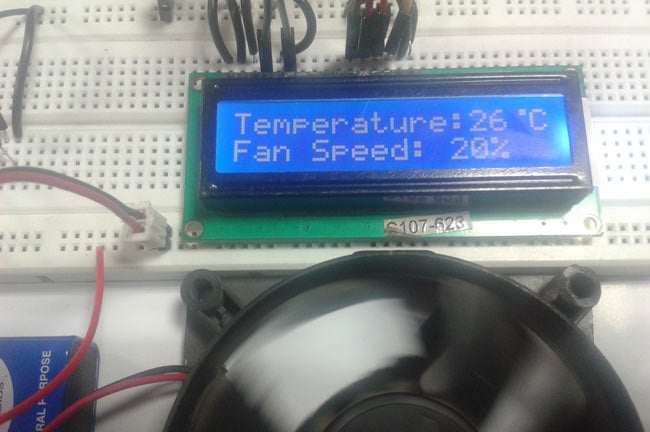
Automatic Temperature Controlled Fan Using Arduino
Temperature Controlled Fan using Arduino. The project ‘Temperature Controlled Fan using arduino’ is simply fabricated around arduino uno board and temperature sensor LM35. The projects are good example of embedded system basically designed using closed-looped feedback control system. For proper user interface visual indication we had also used LCD.
• GET Complete apparatus from • Subscribe to National Academy: Automatic Fan Introduction is one of the most popular electrical devices due to its cost effectiveness and low power consumption advantages. It is a common circuit and widely used in many applications. It is also one of the most sensible solutions to offer a comfortable and energy efficient. In fact, the fan has been long used and still available in the market. Nowadays, the demand for accurate temperature control and air freshening control has conquered many of industrial domains such as process heat, automotive, industrial places or office buildings where the air is cooled in order to maintain a comfortable environment for its occupants.
One of the most important concerns involved in heat area consist in the desired temperature achievement and consumption optimization. Fan can be controlled manually by pressing on the switch button. Where in this method, any change in the temperature will not give any change in the fan speed.
Except the usage change the speed of the fan which is manually. So, an automatic temperature control system technology is needed for the controlling purpose in the fan speed according to the temperature changes. Automatic Fan Control for Air Conditioning System The automatic air conditioning system can be done by using Electronic circuit using Microprocessor or microcontrollers.
Now is advanced among all above circuits therefore we are using microcontrollers for air conditioning such as the This system designed with microcontroller, FAN, temperature senso and a DC motor. The temperature sensor is used to detect the temperature of that environment and send that information to the ADC then that result sends to the microcontroller. Then the microcontroller performs the comparison of current temperature and set temperature as per the logic of the program for which microcontroller has already been programmed. The result obtained from the above operation is given through output port of a microcontroller to the LCD display of relevant data and generated pulses as per the logic program which is further fed to the driver circuit to obtain the desired output to fan.
Advantages of Air Conditional Fan The advantages of automatic fan control for air conditioning system mainly include the following. • Quick cooling • More cooling and less moisture removable • Good for daytime, when cooling loads are low and humidity high • Energy efficient, partly because it removes less moisture • Low speed settings • More moisture removable • Lower fan noise and quieter operations • Good for nighttime, when cooling loads are low and humidity is high • Increased comfort level • Slight loss in efficiency Working of Automatic Fan In this based project, we are going to control DC fan speed according to the room temperature and show these parameter changes on a 16x2 LCD display. It is accomplished by the data communications between Arduino, LCD, sensor Module and DC fan that is controlled by using PWM. PWM is a technique by using which we can control voltage. This project consists of three sections.

Download jpop. One senses the temperature by using humidity and temperature sensor namely Second section reads the output and extracts temperature value into a suitable number in Celsiu s scale and control the fan speed by using PWM. And last part of system shows humidity and temperature on LCD and Fan driver. Here in this project we have used a sensor module namely that are already have discuss our previous project namely “Humidity and Temperature Measurement using Arduino”. Here we have only used this DHT sensor for sensing temperature, and then programmed our Arduino according to the requirements.